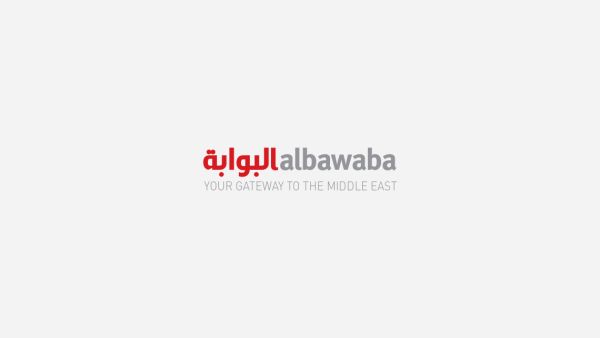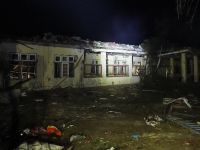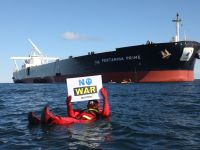The self-declared Caliphate led by Abu Bakr Al Baghdadi now covers a land area greater than Britain and a population of over six million in Syria and Iraq, the final rail in the coffin of the Sykes Picot Pact that created the post-Ottoman Arab state system. The Isis has fought and won successive battles with the Iraqi Army the Kurdish pesh merga and even the Al Qaeda affiliate Jahbat Al Nusra in Syria. It controls Syria’s oil province of Deir Zorr, the Al Shaer gas fields and the cities of Mosul and Tikrit, the vast strategic western Anbar province. The Caliphate controls most of Syria’s crude oil and gas production and has the potential to severely disrupt the strategic oil assets, refineries and pipeline networks of both the Baghdad government and the Kurdish Regional Government. Not since Biafra sought to secede from Nigeria has a major Opec oil producer faced such a serious threat of state partition as Iraq under Nuri Al Maliki in the late summer of 2014.
The Isis’ Caliphate threatens not only the governments of Iraq and Syria but also threatens Jordan, Lebanon, Turkey, Saudi Arabia and the Kurds. Its rapid conquests, its oil wealth, its genocidal sectarian agenda has made it the sworn enemy of both the Ayatollah Khomeini’s Iran and the Obama White House. US Special Forces advisors and Revolutionary Guards intelligence officers are in Baghdad doing their best to prop up Al Maliki’s defeated, discredited Iraqi Army that has not waged a successful counter-attack against the insurgents since June. Could Abu Bakr Al Baghdadi’s Caliphate become a permanent feature of Iraq and therefore a new, lethal variable in the politics of Middle East oil? As long as he can retain the support of the former Baathist general’s Mosul’s merchant class and the tribal shaikhs of the Euphrates in Anbar Province, the answer is yes unless the US commits combat troops against the ruthless, genocidal militia.
It is shocking that the Iraqi state, despite $25 billion in military aid and $100 billion annual oil and gas sales revenue has failed to defeat the Isis, protect Iraq’s minorities or even create a viable, stable political system. The nightmare of a sectarian civil war that almost destroyed Iraq in 2006-07 now threatens to tear apart the second-largest oil exporter in the Arab world. The Kurds have seized the oil rich region of Kirkuk and Massoud Barzani has called for a referendum for the Kurdish independence. The Isis Caliphate and the Baghdad government are locked in a sectarian, existential battle that leaves no room for negotiations or power sharing. The battles of Mosul and Tikrit proved that the Iraqi Army cannot protect the state’s most strategic assets. Iraq, the ultimate “oil state” created by the British Empire from three Ottoman provinces, has now ceased to exist as a sovereign Arab state.
The Nuri Al Maliki government clings to power in Baghdad but it no longer controls the Iraqi state created by the US invasion and overthrow of the Saddam Hussein dictatorship in 2003. The Baghdad government’s policies, systemic corruption, economic incompetence and spillover from the Syrian civil war have destroyed its political legitimacy and claim to power.
Iraq was a founding member of the Opec and is its second-largest producer after Saudi Arabia, with recent production of 3.4 million barrels a day. Iraq’s oil reserves are estimated at as high as 150 billion barrels, among the highest in the world, far in excess of Abu Dhabi, Kuwait or Iran, second only to Saudi Arabia. However, Iraq is a classic case of Joseph Stiglitz’s “oil curse”. The Baathist regime of Saddam Hussein nationalised Iraq’s oil reserves, awarded concessions to Soviet oil and gas monopolies with inferior technologies and squandered more than $800 billion in failed invasions of Iran and Kuwait as well as genocidal war against the Kurds. When Saddam seized the presidency from his uncle in 1979, Iraqi oil production was four million barrels a day, but then went into a secular decline due to the Iran-Iraq war, the Gulf war, the 1991 uprising in Basra Province and the imposition of sanctions against the Baghdad regime.
Iraq’s oil production has surged from two MBD in 2006 to 3.4 MBD now, thanks to huge international investment in its oilfields and infrastructure (reservoir management, pipelines, pumping stations, offshore loading terminals). In fact, the IEA energy economic forecasters expects Iraq to provide two thirds of the increase in Opec production capacity in the next decade. This means the entire world community has a strategic stake in the protection of Iraq’s oil resources.
Brent crude prices have fallen by $10 a barrels since the fall of Mosul in June since Iraq’s major oil production and exports terminals in Basra province have not been disrupted. Iraq exports 2.6 MBD of Basra Light crude to the world markets. However, if the Isis defeats Al Maliki’s army divisions and the myriad militias in Baghdad or unleashes a reign of terror in the south against Western oil workers, a global oil panic is guaranteed. If the Caliphate sabotages the giant Zubair or Mainoon oilfields, all bets are off in Iraq.
By Sarie Khalid








